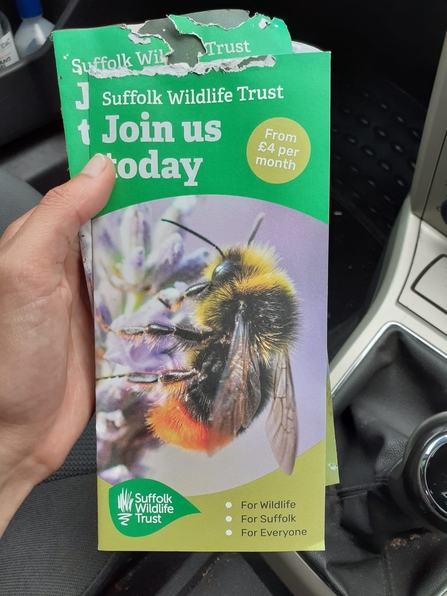Weekly wild news from our reserves - 6 August 2021
Small copper butterfly - Chris Cross
Our wildlearning macro photography course was hosted at Lound lakes this week by wonderful volunteers Dawn Fenton and Helen Hickinbotham. Below is a selection of the stunning shots taken on the day.
We offer a fantastic range of courses for adults and teens including wildlife photography, botanical and wildlife painting, willow sculpture, basic and intermediate hedgehog care and species identification and ecology, find out more and book here.
Call of the wild
A young buzzard was heard and then seen whilst visiting Old Broom nature reserve. The female buzzard broods the young for the first two weeks, while the male brings the food. Later both parents hunt and provide food for the young. The young fledge when they are 50-55 days old, and stay with their parents for 6-8 weeks after fledging.
Indicator species
We often talk about indicator species in the conservation world. Wet through and soggy groups of dedicated volunteers removing tons of saw sedge from Redgrave & Lopham Fen is one sure-fire indicator species of homo sapiens in the height of a British summer!
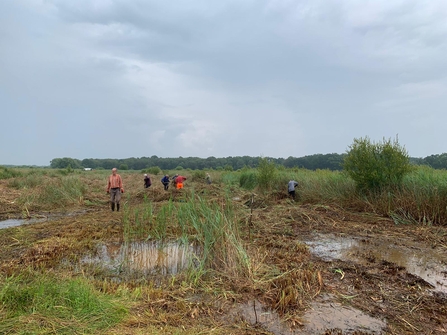
Sedge management at Redgrave & Lopham Fen – Richard Young
Layering wildlife experience
After many months of planning, Covid-19 restrictions and numerous other challenges, the brand-new double-tier hide arrived at Lackford Lakes this week. The kit will be constructed over the month of August to eventually provide visitors with a sheltered viewing area with a range of aspects and angles to spot the array of wildlife found at this flagship reserve.
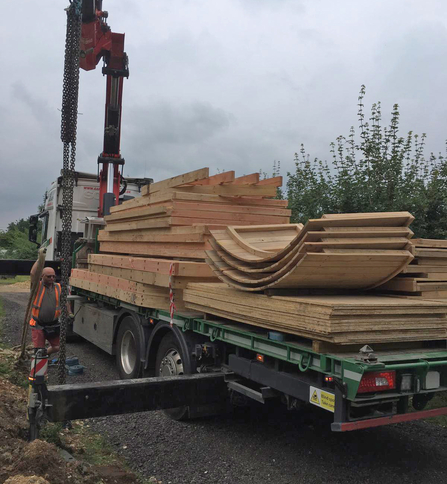
Double tier hide arriving at Lackford Lakes – Will Cranstoun
Bracken rolling
Our North Suffolk team have been busy bracken rolling at Darsham Marshes this week. The bracken roller helps to control the spread of bracken by crushing the bracken fronds and bruising its stems, thus weakening the plant and its overall spread across the site. If it’s not controlled the bracken will dominate and the open habitat will be lost along with important heathland species such as heather, reptiles and specialist heathland insects.
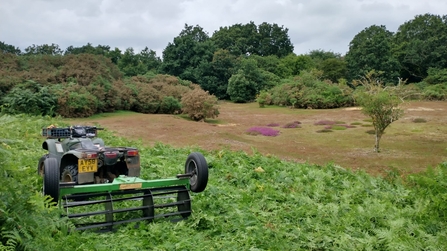
Bracken rolling at Darsham Marshes – Dan Doughty
Toadlet on the move
Early in the spring, toads gather en masse to the ponds they were born in to go about their noisy and sometimes boisterous courtship over a couple of weeks. Once the spawn is laid, the adults hop off again, leaving their tadpoles to their own luck. Over the spring and summer those tadpoles will have been eating and growing, going from vegetarians to hungry meat eaters, and exchanging their tail for legs. By late summer, the toadlets are ready to leave the water and go and make their way onto dry land.
The common toad has olive-brown, warty skin, copper eyes and short back legs. It crawls more than hops, as you can see in this short film taken at Foxburrow Farm.
Selfheal
As its common name suggests, selfheal has a long tradition of being used in herbal medicine for everything from stopping bleeding and healing wounds, to treating heart disease and sore throats. Selfheal can be seen creeping through the short turf of a grassland or the uncut grass of a woodland clearing or roadside verge; it can even pop up in lawns that haven't been treated with chemicals. These were found at Knettishall Heath Nature Reserve where clusters of these violet flowers appear from June to October and provide a nectar source for bees and wasps.
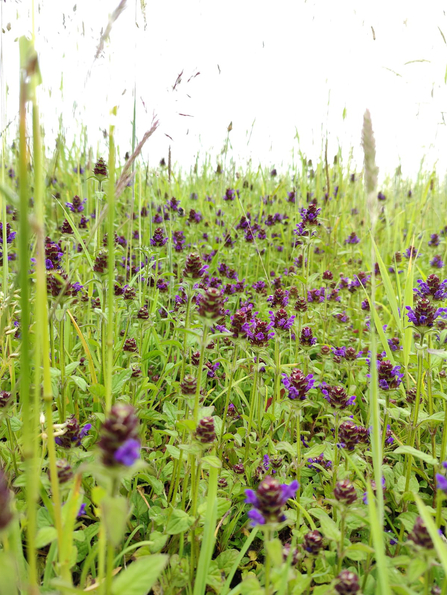
Selfheal at Knettishall Heath – David Stansfeld
Not quite a bittern
Visitors to the tower hide at Carlton Marshes were hoping to spot one of the rare and exciting bird species that have been visiting the reserve recently, but instead they got a bird’s eye view of Matt topping the marshes!
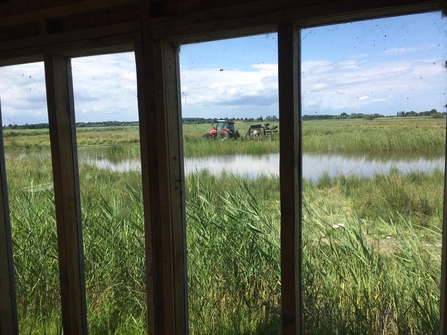
Matt Gooch topping at Carlton Marshes
Hungry snails
Our information leaflets have been munched by a hungry slug or snail, evidence we are clearly providing more habitats for nature than we knew!
